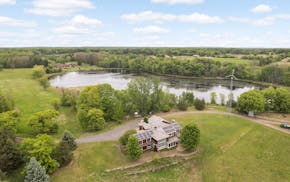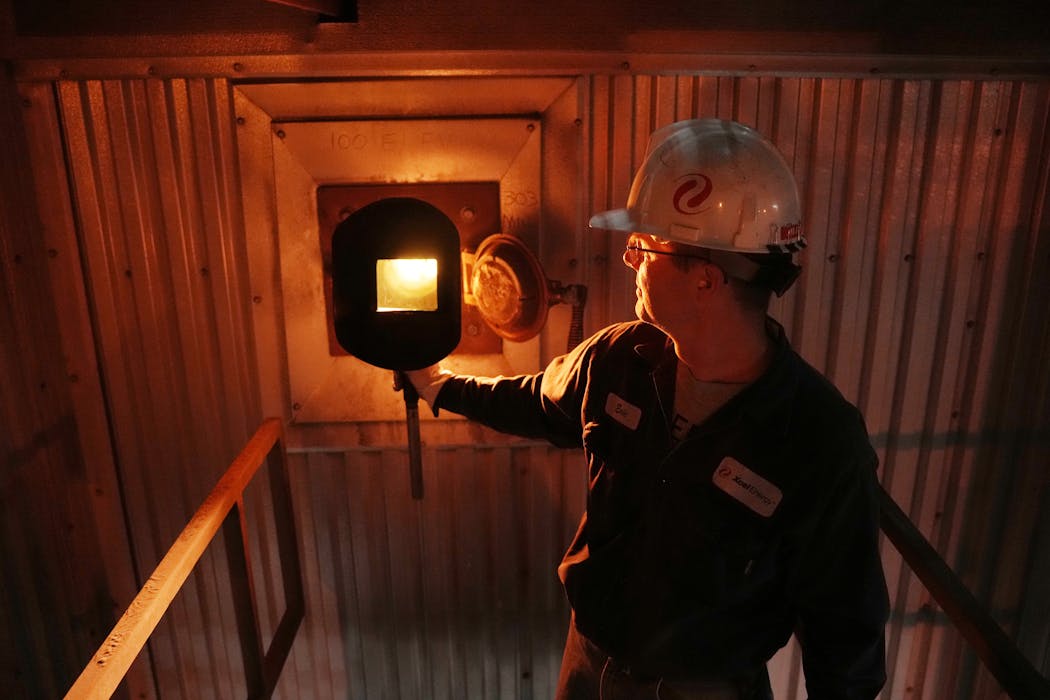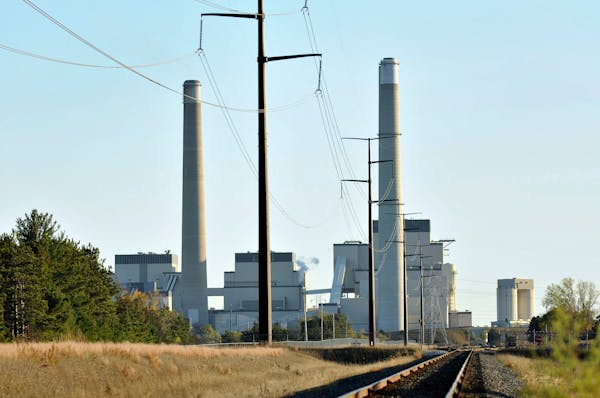BECKER — For more than 45 years, Xcel Energy's Sherburne County coal plant has been a constant, supporting the growth of the Twin Cities metro area with enough power for roughly 1.5 million homes.
But its time as the anchor of Xcel's system is drawing to an end.
On New Year's Eve, Unit 2 at Sherburne County Generating Station — or Sherco, as it is known — will shut down for good, making it the biggest coal-fired generator yet to close in Minnesota. It's a remarkable milestone in Xcel's race to a carbon-free power grid by 2040, especially since the plant's other two units aren't far behind: They are slated to retire in 2026 and 2030.
Isabel Ricker, director of the clean electricity team for the nonprofit Fresh Energy, called the end of Unit 2 a "momentous occasion."
Yet the closure brings some uncertainty for plant workers, surrounding communities, the power grid and Xcel as they plan for life after coal. But it's also a cause for celebration among clean energy advocates because Sherco is the state's largest source of carbon emissions.
Plant director Michelle Neal called Sherco a small city. She was talking about how massive the structures are, but the workers also have formed a community.
Most of the plant workers will be needed elsewhere in Xcel's operations as the units close, said Eric Stotko of Sartell, who started at Sherco in 1998 and is now the operations foreman for Unit 3 at the plant. Still, he said morale is only OK in a dynamic workplace where many have pride in long careers.
"All of us came into this never expecting any of these units to shut down," said Stotko, a member of the International Brotherhood of Electrical Workers Local 160, the primary union at Sherco. "The thought of these big units that provide all this stability going away, it's somewhat concerning."
A moment in energy transition
Xcel's upper Midwest system is roughly 70% carbon free thanks to nuclear, wind and the closure of several smaller coal plants, the company said.
However, ending coal has long been a top priority for groups like Fresh Energy. Ricker said Unit 2 closing this early is also important because it prevents emissions ahead of 2040.
"From a public health and climate change mitigation perspective this is a really big deal," Ricker said.
Sherco's three units released 10.5 million tons of carbon emissions in 2022, according to the Environmental Protection Agency. That's equivalent to more than 2 million cars on the road in a year.
Each of the three units has at least 1 million horsepower. The biggest boiler — which incinerates ground coal in what is called "the fireball" — stands 21 stories tall. Workers are around ash that might be upwards of 600 degrees.
Xcel opened Unit 1 at Sherco in 1976. Unit 2 came online a year later.
Sherco was, at the time, the "culmination of economies of scale in the utility business," said Chris Clark, the company's president for Minnesota and the Dakotas. In the 1980s, Xcel added a larger third unit, split with the Southern Minnesota Municipal Power Agency.
Since then, Sherco has been a "workhorse" in Xcel's energy mix, Clark said. There were bumps along the way — like a catastrophic turbine failure on Unit 3 in 2011. But in 2015, when Xcel first proposed retiring two of Sherco's units, it was for reasons both environmental and economic.
The company was building a stable of wind power, which became cheaper and more productive through regulations, tax incentives and improving technology. The price of natural gas was also steady and inexpensive during the fracking boom.
At first, the company envisioned a new gas plant at Sherco. But since then, Xcel sought approval to build one of the country's largest solar complexes at the site. The company also announced it would shutter Unit 3 in 2030.
Xcel's plan for continued reliability
During a tour of Sherco in early December, Unit 2 wasn't running, sitting in reserve but available should electricity demand spike for a reason like cold weather.
That won't be an option after Dec. 31.
The Sherco solar projects will make up for some lost power, but not all. Clark said the utility has been adding new electricity sources ahead of the closure, giving the company more energy production than customers use at peak demand.
Once Unit 2 is gone at Sherco, though, Clark said Xcel will have a smaller margin. But the company can also buy power on the open market, said Randy Capra, general manager of Xcel's energy supply in Minnesota.
There are reliability questions facing Xcel and others lately. The 15-state area overseen by the Midcontinent Independent System Operator (MISO) is at elevated risk of lacking electricity under extreme circumstances this winter, according to the nonprofit North American Electric Reliability Corporation.
Another potential question for Xcel is cost. Electricity bought on the open market, and the construction of more energy infrastructure, has the potential for higher bills. Plus, Clark said recent volatility in the cost of natural gas has made the economics of closing Sherco "more challenging." Still, he said federal tax credits will bring down costs as the company aims to limit bill increases to about 2.5 to 3%, less than long-term inflation.
"We're investing billions in the system, so it's not like there's no costs," Clark said. "But we're doing it as responsibly as we can to make sure we can deliver this affordably."
What's next at Sherco
As the coal-fired units head toward closure, the company wants to make the site something of a clean energy hub beyond solar.
Xcel is planning to repurpose existing equipment at Unit 2 for a synchronous condenser, a machine that helps grid reliability with renewable power. The company also plans to connect the electric grid left over from the coal plant to solar and transmission infrastructure — like a massive $1.14 billion power line stretching to Lyon County that will help transport renewable energy. And Xcel plans to build a 10 megawatt, 100-hour battery system on site, too.
Right now, after attrition and retirements, there are 240 employees at the complex. But long term, managers aren't sure how many will be needed at the site and how many will transfer to other Xcel jobs elsewhere.
Less panic, more planning in Becker
In Becker, leaders said the Unit 2 closure is not expected to be an earthquake. Mayor Tracy Bertram said the city of 5,000 has planned for this moment, working to attract new businesses and successfully lobbying state lawmakers for aid.
The recycling company Northern Metals moved in, and a large data center is a possibility. Some of Xcel's clean-energy projects could also bring benefits.
"At first there was this sense of panic, what's going to happen, because that has been Becker's identity since the 1970s," Bertram said. "We definitely didn't want to become a city that just falls away."
One major question for Becker and Sherburne County is tax revenue, though the Legislature approved money this year that will help the city replace losses, said Becker City Administrator Greg Lerud.
Roughly two-thirds of city taxes come from the power plant. That income has helped build the city. In a 1977 story, the Minneapolis Tribune reported that Becker had wide new streets with "spanking white curbs," a well-equipped fire department and a $5 million high school under construction with an Olympic-size swimming pool.
State Sen. Andrew Mathews, a Princeton Republican who represents Becker, has pushed to replace Sherco's coal with natural gas and wants to lift Minnesota's ban on new nuclear plants. He worries about lost power affecting grid stability, and he said state money for governments hosting retiring plants is a Band-Aid compared to new electric generation.
"We're going to end up just purchasing the energy we need and probably at a higher price without any tax or job benefits," Mathews said.
Nevertheless, Xcel has begun preparing to disable Unit 2. Although Xcel has closed three other coal plants in Minnesota, converting them to natural gas facilities, this is different.
Neal, the plant manager, said workers will sift through infrastructure to see what could be reused or sold. The company will clean its boiler — which involves explosives for knocking down ash slag. Xcel also will wall off part of the unit to save on heating.
Stotko, the Unit 3 foreman, plans to stick around through 2030, when the last unit is closed.
"My plan is to shut the lights off on my way out," he said.

Minnesota Department of Health rescinds health worker layoffs

Eco-friendly house on 30 acres near Marine on St. Croix listed at $1.6M

DOGE cuts federal money for upgrades at Velveeta plant in New Ulm






